Turtle Wax Aims To Be Leader In DIY Segment In India
- By Sharad Matade
- December 19, 2020

Turtle Wax, a global name in the car care industry, entered the Indian market this year. With its aggressive plans and the ongoing demand for car care products, the company aims at becoming one of the largest care car product suppliers in Doing It Yourself (DIY) segment, besides, establishing a strong presence in Do-It-For-Me (DIFM) space.
According to Sajan Murali Puravangara, Country Manager and Director, Turtle Wax India, the car care industry is an integral part of the automotive industry, and changing buying preference from the mileage, and low maintenance to aesthetics, safety, comfort and features are fuelling demand for car care products.
“India has been witnessing good growth in car sales in last decade, whereas in the last five years, we see traction in the car care industry on account of changing trends or reasons to buy a car. In recent years, the way people look at the car has changed. They buy cars for the looks and features, and that also led to an interest to keep their cars new, tidy and clean; this is bringing demand for car care products. The interest is also coming from the mass car segment. In the last two years, we are getting the indication that the car care industry will be the next sunshine industry in the future,” explained Puravangara.
Turtle Wax, a family-owned company, has been in the car care business for nearly 75 years and operates in over 120 countries. Before establishing its third subsidiary in India, the company has been operating with two subsidiaries- the US and Europe.
India has a population over 1.3 billion and only 22 people out of a thousand own car, while in the US and UK, 980 and 850 per 1,000 individuals have a car, respectively. The massive headroom for the car segment in the next one-and-a-half-decade will trigger further growth for the car care segment in the long term, opines Puravangara.
According to a research report, the current car care industry in India is slightly less than one billion USD and expected to reach $1.44 billion in 2027. Explaining the growth factors, the report says, people usually keep their cars for more than seven years in India, and hence car care products are being increasingly used to restore the paint and for detailing and interiors. Along with this, many car care product manufacturers from Europe and North American markets have their presence in India through e-commerce websites and strong dealership networks. The same report adds that by 2027, the interior car care product segment will be around of $0.73 billion, while the exterior car product market will grow to USD 0.7 billion.
Consumer behaviour, cheap labour, and lack of necessary know-how make the Indian car care industry more challenging for the companies to operate in the DIY space.

In western countries, cars are a part of the family, and family members take basic care. In the US and other developed countries, the DIY segment is about 80 percent of the total car care industry; however, in India, it is of around 30 percent. “In countries like India, due to the hectic work schedule and cheap labour, DIFM dominates in the car care segment. There is always a third person to take basic care of cars in India. Coupled with this, the know-how is fairly lower in India when it comes to basic things such what wax can do to your car and what are the ways to protect cars’ interior and exterior,” Puravangara said.
However, the pandemic in the last eight months has proven useful for the car care segment. “We have seen momentum in the DIY business in the last six months. Since people have been at home, they have a lot of time at their disposal. They find time to take care of their cars. We are also seeing people are increasingly enquiring on different social media platforms on how to take care of their cars and sharing other issues,” he said.
As a part of the strategy to penetrate its products, the company will heavily focus on educating consumers on primary car care and the company’s products. “Being a global leader in the car care industry, it is our top priority to educate people on car care, know-how and our product usages and benefits.”
In the next three to four months, the company will start campaigns on social media channels. The campaign will invite consumers with their queries or to share their experience and issues.
“The company will also bring out videos on how to use our products and use the social influencers on YouTube and Instagram,” Puravangara said.
Though India is seeing a growing number of women behind in the wheel, the car care industry is yet to consider women as their potential customers. However, Turtle Wax understands the role of women in the overall automotive industry and expects the growing number of women car owners evidently will reflect in the car care industry.
To widen its customer base, the company will also promote the car wash as a family celebration where family members will take participate in washing, cleaning and taking care of the car. “Washing and cleaning cars is a family affair in many countries, and therefore the company will be promoting the same in India as well,” added he.
However, external factors that also possess further challenges for car care products. Considering vast territories, different weather, pollutions and scarcity and quality of water put car care product performance under severe pressure. Keeping the external challenges in mind, the company plans to bring in products that are suitable to the Indian markets.
“A larger challenge is not only the availability of water but the hard water which leaves marks on the car. Coupled with this, extreme temperature and dust and pollution affect the car. We are bringing in the products that will take care of cars in the Indian environment. We have asked the company to make products suitable for the Indian market,” said the executive.
Currently, the company offers the products required to clean, shine and protect the car inside out. The product portfolio includes shampoo to clean, wax to shine and various interior cleaners in the form of foam and liquid to clean the interiors of the car. It also offers various speciality products like trim restorer, chrome polish, headlight lens restorer, Odor-X Odor removing solutions, etc. to address specific car care requirements. Turtle Wax also has a ceramic coating that has 10H hardness which gives the high gloss, ultra-hydrophobicity, extreme chemical resistance, UV protection and easy cleaning properties. The company plans to bring in graphene-based ceramic coating solutions, which is the new technology in the car care industry.
The company is planning to bring 75th-anniversary Ceramic Paste Wax in Q1 2021, and will also introduce windshield washer fluid shortly in India. Other products from the company for the India market include all-metal polish that polishes all metal surfaces of the car’s exterior; Glass cleaner to keep the glass streak-free during the ride; ClearVue Rain Repellent that helps get better visibility during the monsoon rains; Trim Restorer since the Trims fades here in India more than the rest of the world and Windscreen washer fluid to remove the dirt and grime from the windshield glass.
The company will also introduce waterless washing products that cater to areas where water is scarce. The company’s waterless wash and wax has advanced polymer technology that lifts dirt to prevent starching, while the enriched wax gives a shiny and protective finish. Its rain repellent formula prevents watermarks and extends time in between cleaning.
The company will also bring in its Turtle Wax Hybrid Solutions ICE Seal N Shine, premium car paint sealant. The ICE Seal N Shine gives the car a layer of super-hydrophobic silicone for up to six months of protection against streaks, scratches and swirls.
To set up its network, the company will go through a distribution route and for which it has selected 23 cities, which have larger car density. Turtle Wax India is appointing own distributors in these cities who will take care of retailers and workshops. It has also identified another 48 towns in which it will supply products to dealers who will provide the products in the respective markets.
“We will have our main presence in all metro cities including Chennai, Hyderabad, Bangalore, Delhi-NCR, Kolkata, Pune, Mumbai, and additional upcoming cities like Ahmedabad, Coimbatore, Cochin, Surat etc,” he added.
The company plans to have about 10,000 outlets by the end of next June. Turtle Wax India has also set up the car care studios in Pune, Bangalore and New Delhi. The studio will be not based on a franchise concept; instead, it will be a co-branded activity. “We provide our products and branding support, but the studios also keep their brand identity,” he said. The company also has plants to have such studios in its 23 cities.
Puravangara declined to share the current revenue and future commercial targets but said sales numbers are increasing with each passing month. Currently, the company is importing its products from global subsidiaries, but he said the company will have a look into setting up local production capabilities. “The way it is going, we will have to do something locally as well. I don’t think we will be able to manage (the demand) with our global support when the demand goes up,” he said.
The company is looking for an option of re-packaging under which it will get bulk products and repack for the domestic market. “We will also see if some India oriented products will be manufactured here, completely. Those options are quite open,” he added.
Many Indians are using hair shampoo sachets to wash cars. When asked whether the company is looking to introduce car wash shampoo in sachets, he said it will not look into sachet option but will be looking to have a bottle of 100 to 200 ml. “We are still looking at those options of small bottles, but per wash, cost increases with smaller bottles,” he added.
Talking on the challenges, he said, it is on finalising the complete product portfolio that suits to the rapidly changing requirements of the Indian market. “We need to keep reinventing on products to be a leader in the market,” he concluded. (MT)
- Hagerty UK
- Vehicle Excise Duty Exemption
- VED Exemption
- Historic & Classic Vehicles Alliance
- Classic Cars
UK Chancellor Maintains Vehicle Excise Duty Exemption For Classic Cars
- By MT Bureau
- November 27, 2025

The UK's cherished classic car community can finally breathe a collective sigh of relief. The decisive action by Chancellor Rachel Reeves in the Autumn Budget to maintain the Vehicle Excise Duty (VED) exemption for vehicles over 40 years old has ended a prolonged period of uncertainty, securing a stable future for this vital sector. Mark Roper, Managing Director of Hagerty UK, welcomed this clarity, noting that the confirmed freeze on fuel duty further solidifies a supportive environment for owners. He underscores that this is a significant win for the GBP-7.3-billion industry that supports over 100,000 jobs and contributes GBP 3 billion annually to the UK economy, all while championing an inherently sustainable form of motoring.
This perspective on sustainability is reinforced by Dale Keller, CEO of the Historic & Classic Vehicles Alliance (HCVA), who affirms that the tax exemption logically aligns with environmental objectives. Classic vehicles, preserved as moving heritage, have a negligible lifecycle carbon footprint compared to new manufacturing and are driven infrequently. The original principle of the exemption remains valid, as applying a modern tax to these rarely used assets would be inequitable.
Alongside the VED news, the Chancellor confirmed the continuation of the MOT exemption for classic cars, though this will remain under review. On this point, Roper of Hagerty UK strikes a note of caution, observing that many within the industry advocate for an annual roadworthiness check. He notes that a great number of responsible classic owners voluntarily submit their vehicles for an MOT each year, valuing the independent assurance of safety and mechanical integrity it provides.
For Hagerty UK, as a specialist insurer deeply embedded in this world, the government’s affirmation is a powerful endorsement of the sector's cultural and economic value. Through its vibrant Clubhouse at Bicester Heritage and unique events like RADwood, Hagerty is actively fostering this passionate community. Similarly, the HCVA continues its mission to protect and promote the diverse ecosystem of specialists, restorers and businesses that form the backbone of this multi-billion-pound industry, ensuring its legacy for generations to come.
Mahindra Racing Extends Formula E Involvement With GEN4 Manufacturer Commitment
- By MT Bureau
- November 26, 2025
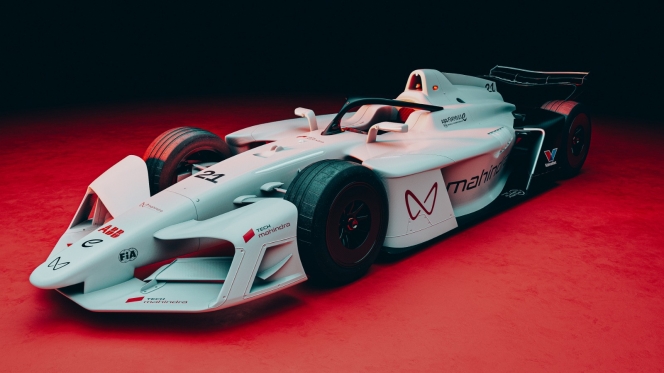
Mahindra Racing has solidified its long-term future in electric motorsport by confirming its manufacturer commitment to the GEN4 era of the ABB FIA Formula E World Championship, starting in 2026/27. This announcement, made during the unveiling of its new M12Electro race car in India, extends a relationship that began in 2013 when Mahindra stood as both a founding team and the first OEM to join the all-electric series.
The team's current trajectory underscores the significance of this pledge. Following a dramatic 18-month transformation under CEO and Team Principal Frederic Bertrand, Mahindra Racing has evolved from a backmarker into a consistent front-runner. This resurgence was powered by the redesigned M11Electro, in which drivers Nyck de Vries and Edoardo Mortara collectively secured five podium finishes in Season 11, catapulting the squad to a stellar fourth place in the world championship. The newly launched M12Electro is the intended vehicle to maintain this status as a top-five contender and a regular threat for podium positions in the forthcoming season.
The technical landscape for GEN4 promises to further electrify the sport. The next-generation cars will boast a peak race power of 450 kw, with a potent 600 kw available in ATTACK MODE to empower aggressive overtaking. Enhanced strategic possibilities will come from a race energy capacity of up to 55 kWh and a remarkable 700 kw of regenerative braking. In a continued commitment to sustainability, the GEN4 chassis will be produced from 100 percent recyclable materials and will feature two distinct aerodynamic configurations – high-downforce for qualifying and low-downforce for races – to optimise performance.
Mahindra's ambition is to leverage this new regulatory chapter to build on its renewed momentum, chase incremental gains and establish itself as a confirmed championship contender against elite manufacturers like Porsche and Jaguar. This competitive platform also serves a broader purpose, aligning with the Mahindra Group’s sustainability initiatives. The team, the first in Formula E to earn the FIA’s Three-Star Sustainability Accreditation, has embarked on its ‘Planet Positive’ programme. This initiative is dedicated to driving positive impact in communities and economies, accelerating climate solutions and using the intersection of sport and technology as a catalyst for a better future.
R Velusamy, Chairman, Mahindra Racing, said, "Mahindra Racing has always been a symbol of our commitment to the Race to Road journey – where cutting-edge innovation on the track directly shapes the clean, intelligent and high-performance mobility solutions we deliver to customers. Formula E is a powerful platform for innovating new technology, giving us the ability to experiment, learn and advance electric powertrain efficiency, sustainable materials and software intelligence. As we step into the GEN4 era, our ambition only grows stronger. Continuing this journey till 2030 is a testament to our belief in the sport, in electrification and in India’s role in leading global sustainable mobility. We are proud to champion this future, and GEN4 represents an exciting new chapter for Mahindra Racing and the Mahindra Group.”
Frederic Bertrand, Team Principal, Mahindra Racing, said, “I’m delighted to share this announcement that Mahindra Racing will remain in Formula E as a manufacturer for the GEN4 era. As a team, we have been on a fantastic journey over the past two seasons. What we have built and achieved as a group has been exceptional, and with this announcement, we now have the platform to keep growing and developing and achieve even greater success in the future. None of this would be possible without our colleagues across the Mahindra Group. They have bought into the project and the vision, and we will keep working hard to not only make India proud but also showcase exactly why it has the potential to be a major player on the world stage in the automotive and technology industries. Their enthusiasm to ‘Scream Electric’ is hugely inspiring to the whole team, and we will continue to represent them with pride in this next exciting chapter of our Formula E story in the coming years.”
Jeff Dodds, CEO, Formula E, said, “We’re thrilled to confirm Mahindra’s long-term commitment to the GEN4 era of the ABB FIA Formula E World Championship. As one of our founding teams, Mahindra has been with us since the very beginning, consistently championing electric racing and innovation. Their bold vision for sustainable mobility and continued investment in advanced EV technology perfectly align with Formula E’s mission. Mahindra’s enduring presence not only strengthens our position in a key market but also reinforces Formula E’s role as a global platform for driving positive change. We’re excited to see what they’ll achieve in this next chapter of performance and progress.”
Marek Nawarecki, Senior Circuit Sport Director, FIA, said, “Following the GEN4 reveal and the really positive sentiment reported, we are pleased to announce Mahindra as the sixth manufacturer to commit to Formula E’s GEN4 era. This is testament to the relevance of the road map we are implementing in Formula E for OEMs. GEN4 underscores just how far the ABB FIA Formula E World Championship has come since 2014 and we are looking forward to continuing this journey with Mahindra as one of the founding teams and partners.”
Mahindra Charts Aggressive Decade Of Growth Across Auto, Farm, CV And Last-Mile Mobility Businesses
- By MT Bureau
- November 21, 2025
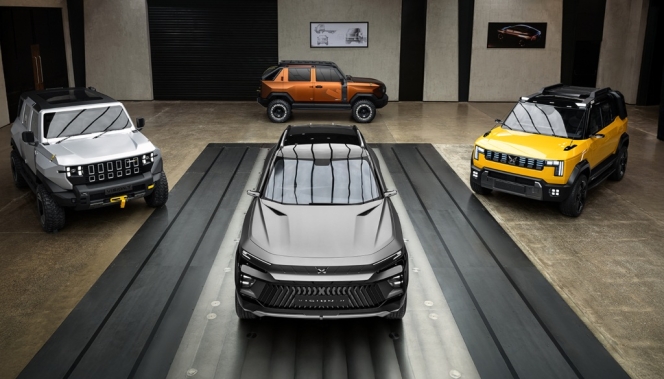
Mumbai-headquartered conglomerate Mahindra Group has unveiled an ambitious long-term roadmap across its core mobility and equipment businesses, detailing plans for accelerated growth in the automotive, farm equipment, commercial vehicle and last-mile mobility segments.
The strategy, presented at its Investor Day 2025, underscores the Group’s intent to leverage India’s expanding economy while deepening global market participation.
Mahindra expects its consolidated automotive business to grow 8x between FY2020 and FY2030, driven primarily by a stronger push in sports utility vehicles (SUVs) and light commercial vehicles (LCVs).
The company aims to become the world’s fastest-growing SUV brand. Its product strategy is rooted in new-age platforms such as INGLO and NU_IQ, enhanced digital architecture under MAIA and Adrenox, and continued investment in safety and performance.
At present, Mahindra holds more than 26 percent revenue share in India’s SUV segment as of the first half of FY2026. Strong consumer traction for models including the Thar, XUV700, XUV3XO and the Born Electric (BE) series is expected to support the company’s international expansion to right-hand-drive and left-hand-drive markets across Europe, Australia, Africa and other regions.
Strengthening leadership in LCV segment
The LCV business, where Mahindra commands 54.1 percent volume share in vehicles under 3.5 tonnes (as of H1 FY2026), is set to be another pillar of growth. The product range has broadened through the Supro, MaXX and Veero platforms, including CNG and electric variants. The company is also preparing for wider adoption of lifestyle pickups, led by the upcoming Global Pik Up.
Mahindra’s LCV strategy emphasises best-in-class total cost of ownership, reduced downtime, enhanced comfort and technology integration, with the segment also targeted for eightfold revenue growth during the decade.
Farm business
Mahindra, the world’s largest tractor manufacturer by volume, has outlined plans for threefold revenue growth in its farm equipment division between FY2020 and FY2030.
The Indian tractor market has continued to shift towards higher horsepower models, particularly in the 40–50 HP range. Mahindra aims to consolidate share in this segment through newer platforms including Yuvo Tech+, Swaraj Protek and Next-Gen ranges. Improvements in crop profitability and a more favourable price environment for tractors are expected to support industry expansion.
Mechanisation levels in India remain uneven, with significant headroom in sowing, crop care and harvesting equipment. Mahindra is expanding its farm machinery portfolio while leveraging its extensive dealer network and manufacturing footprint. The division, already a business exceeding INR 10 billion, is poised for rapid scaling.
Mahindra continues to build presence in key global markets:
- Brazil: 8 percent share in the sub-120 HP category, and about 20 percent in sub-50 HP
- North America: more than 10 percent share in sub-20 HP; upcoming launches to deepen penetration
- ASEAN: early progress with about 4 percent share in pilot territories
Electrification, autonomy, precision agriculture and pay-per-use technology services form the next frontier for Mahindra’s farm business.
Targeting Top-Three Position in ILCVs
Following the acquisition of SML Isuzu, Mahindra is advancing a strategy to be among the top-three player in India’s intermediate and light commercial vehicle (ILCV) market. The domestic CV industry is projected to grow from approximately INR 15,000 billion in FY2025 to nearly INR 20,000 billion by FY2031, supported by infrastructure development, logistics modernisation and GST-driven reforms.
Mahindra aims to expand its presence in ILCVs, while pursuing a selective play in the heavy commercial vehicle category. The strategy benefits from combined advantages across product development, sourcing, aggregates, telematics and network coverage. The company expects up to sixfold revenue growth in its CV business during the decade.
Last-Mile Mobility
Mahindra Last Mile Mobility (MLM) is shaping an aggressive electrification-led growth plan, targeting sixfold revenue expansion and a cumulative one million electric vehicles on the road by 2031. EV sales climbed to 78,678 units in FY2025, led by the Treo series, which remains India’s top-selling electric three-wheeler.
The division has:
- Strengthened its engineering capabilities with a 400-member product development team
- Commissioned a new state-of-the-art manufacturing plant in Telangana
- Expanded production capacity two-fold
- Developed proprietary battery, motor and telematics systems
The product roadmap includes advanced electric three-wheelers and electric four-wheelers tailored for last-mile applications, along with plans to expand exports to more than ten markets. Mahindra’s EV fleet has cumulatively saved over 300 million litres of fuel and prevented more than 185 kilo tonnes of carbon dioxide emissions.
Across all mobility segments, Mahindra’s plan is anchored in product leadership, technology integration, capital discipline and global expansion. A stronger focus on electrification, platform consolidation, digital interfaces, manufacturing efficiency and customer-centric service models is expected to underpin the Group’s growth trajectory.
- Murugappa Group
- Arunachalam Vellayan
- Coromandel International
- EID Parry
- EXIM Bank
- Kanoria Chemicals & Industries
- Indian Overseas Bank
Murugappa Group’s Former Chairman Arunachalam Vellayan Passes Away At 72
- By MT Bureau
- November 18, 2025

Chennai-based conglomerate Murugappa Group has announced the passing of Arunachalam Vellayan (1953–2025) following an illness.
Vellayan was the Chairman Emeritus of Coromandel International and the Former Chairman of the Murugappa Group. He is survived by his wife, Lalitha Vellayan, his sons, Arun Vellayan and Narayanan Vellayan, and his grandchildren.
The Former Chairman dedicated several decades to the Group, providing strategic direction across its businesses. His approach to value creation helped strengthen and expand the Group, contributing to its reputation as a respected conglomerate.
He served on the Boards of various Murugappa Group companies, including as Chairman of Coromandel International and EID Parry.
Outside the Group, he served on the Boards of entities such as Kanoria Chemicals & Industries, EXIM Bank and Indian Overseas Bank.



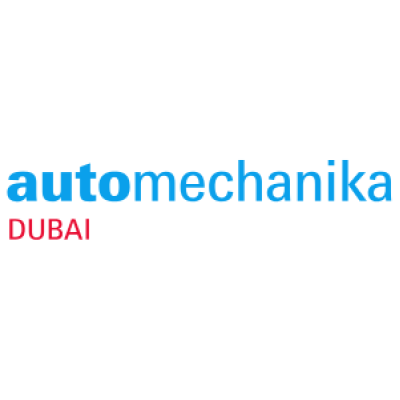
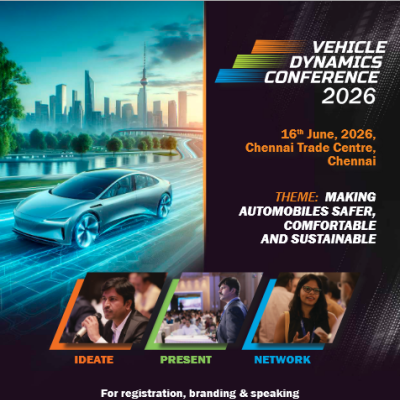
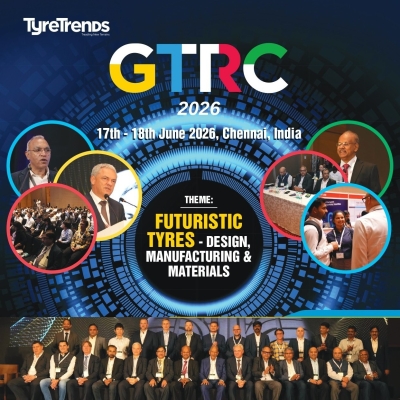
Comments (0)
ADD COMMENT